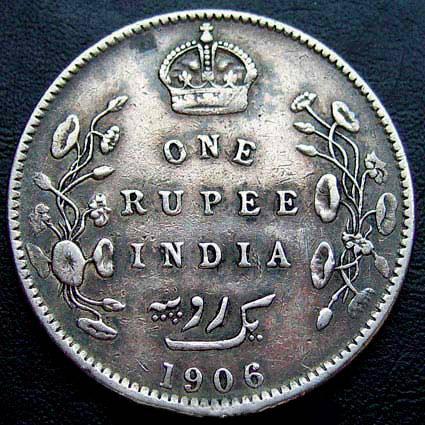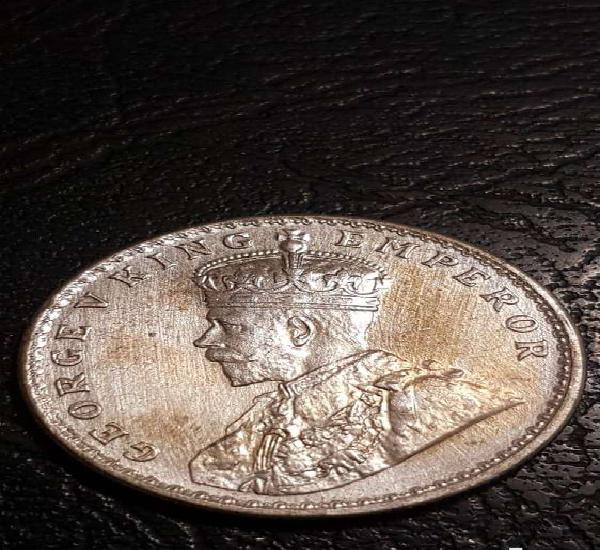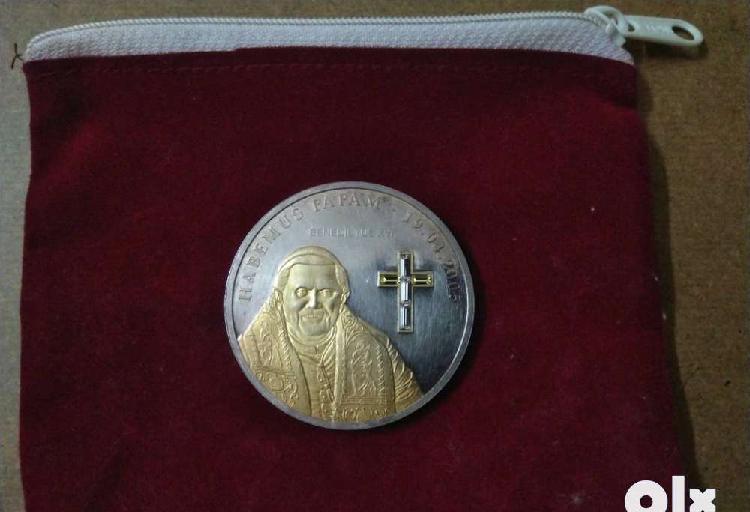Reverse cross coin
Top sales list reverse cross coin

India (All cities)
The Edward VII series of coins of India are dated 1903-1910. No Gold coins were issued during the reign of Edward VII. There are four silver coins (Rupee, 1/2 Rupee, 1/4 Rupee and 2 Annas) and three copper coins (1/4 Anna, 1/2 Pice and 1/12 Anna). A Cupro-nickel 1 Anna coin was introduced in 1906... But this is a 1 Rupee Coin... dated back to 1906 On 01 Aug, 1906, the copper coins were replace by bronze issues with the same obverse and reverse designs but a thinner plancet due to the rising international prices of copper. The 1906 coins come in both varieties... This is a Silver made Another special feature of the coinage of this period was that,in all the silver coins the inscription was in both English and Persian, compared to Victoria coins that showed only English. The King Edward VII coins are distinct as the head is uncrowned. The apparent explanation is, though Queen Victoria died on 22 January 1901, Edward's coronation was not held till 9 August 1902. The master dies were created before the coronation, so it was not possible to show him wearing the crown. Obv. Description - Edward VII face Rev. Description - Crown, Flower and written in English Weight - 11.6000 g Material - Silver Orientation - Coin Mint - Purely Mint Edge Type - Reeded Thank You.
See product

Agra (Uttar Pradesh)
The bicentennial Washington quarter features a 1776-1976 date on the obverse and a colonial drummer on the reverse of the coin to celebrate the 200th anniversary of the United States of America. This coin was produced in both years of 1975 through 1976 so there were no 1975 coins.
See product

Mumbai (Maharashtra)
East India Company 1818 1835 Cross Flag and Magnetic effect Like Needle and Other Function Coin
All in Good Condition
See product

Surat (Gujarat)
Country India - British
Type Standard circulation coin
Years 1941
Value 1 Rupee (1)
Composition Silver
Weight 11.66 g
Diameter 30.5 mm
Shape Round
Lettering: GEORGE VI KING EMPEROR
Engraver: Percy Metcalfe
Reverse
Within circle, date divides legend in English & Urdu (Yek Rupya) . Outside circle, wreath made of roses, thistle, shamrock leaves and lotus flowers. All within a toothed border
Lettering:
ONE
RUPEE
INDIA
1941
sdjko sdfjsod sdfjo.
See product

Delhi (Delhi)
- 1919 One Rupee Coin from the British Raj
- King George V embalmed on the reverse side
- Been with the Family. Got as a Gift from Grandmother years back.
- No Online Payments. Contact only if you are ready to Pay in CASH
- Don't try and send any QR Code etc... as too many Fraudsters on this site
See product

Jaipur (Rajasthan)
Tonk stamp princess coin as google told by reverse image search
See product

Kolkata (West Bengal)
An error twenty paise coin. Obverse is twenty paise, reverse is one rupee. Exceptional error. Only for local sale. No courier.
See product

Ambikapur (Chhattisgarh)
Ancient coin year 1818 from india , 08gm half anna india , rare avaible orignal has marking of leaf on both sides represting as like cross this was the ancient symbol of that coin.
₹ 600.000
See product

Vijayawada (Andhra Pradesh)
I have collectable silver coin with pope image impregnated. It was made by The Numismatics Company, Switzerland who manufactures Nobel Prize Medals. It was 63 Gr made with silver and Cross made with Swarovsky crystal.
Purely collectors item.
Price 7500/- ( Nego)
See product

Hapur (Uttar Pradesh)
Very sharp details on both the obverse and reverse sides. Obverse legends are 2.5 mm from the rims. This variety is the rare one.
Kolkata Mint.
See product

Navi Mumbai (Maharashtra)
The 25 paise coin from 1959 holds historical significance as a part of India's currency evolution. On its obverse side, you would likely find the numerical value "25" denoting its denomination, often accompanied by the term "PAISE" in English or Devanagari script. Surrounding this central motif, there might be intricate decorative patterns or designs typical of Indian coinage from that era.
The reverse side commonly features the national emblem, the Ashoka Lion Capital, encircled by the words "Satyameva Jayate" in Devanagari script, symbolizing the nation's ethos of truth prevailing. Additionally, the year of minting, "1959," would usually be inscribed on the coin, indicating its vintage.
These coins were typically minted using materials like copper or brass and would have a diameter of around 22 mm. Over time, due to circulation and wear, the coin's appearance might have been affected, but it remains a tangible artifact representing the economic and cultural context of India in the late 1950s.
See product
